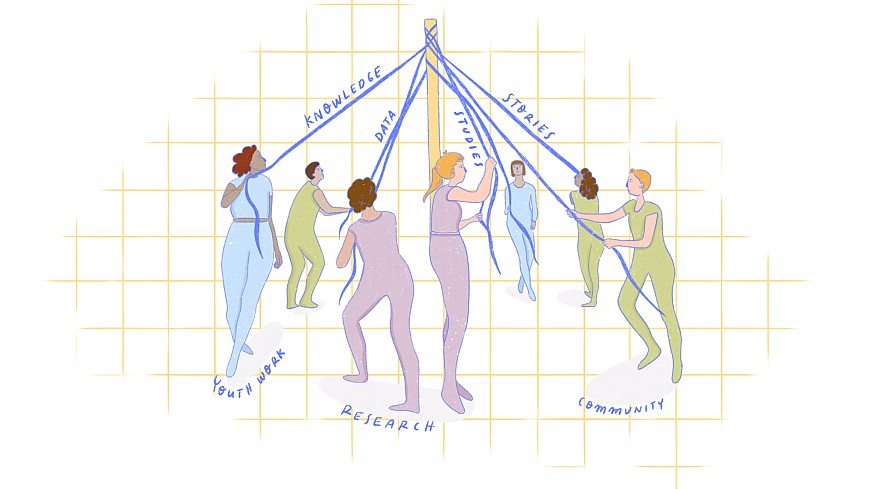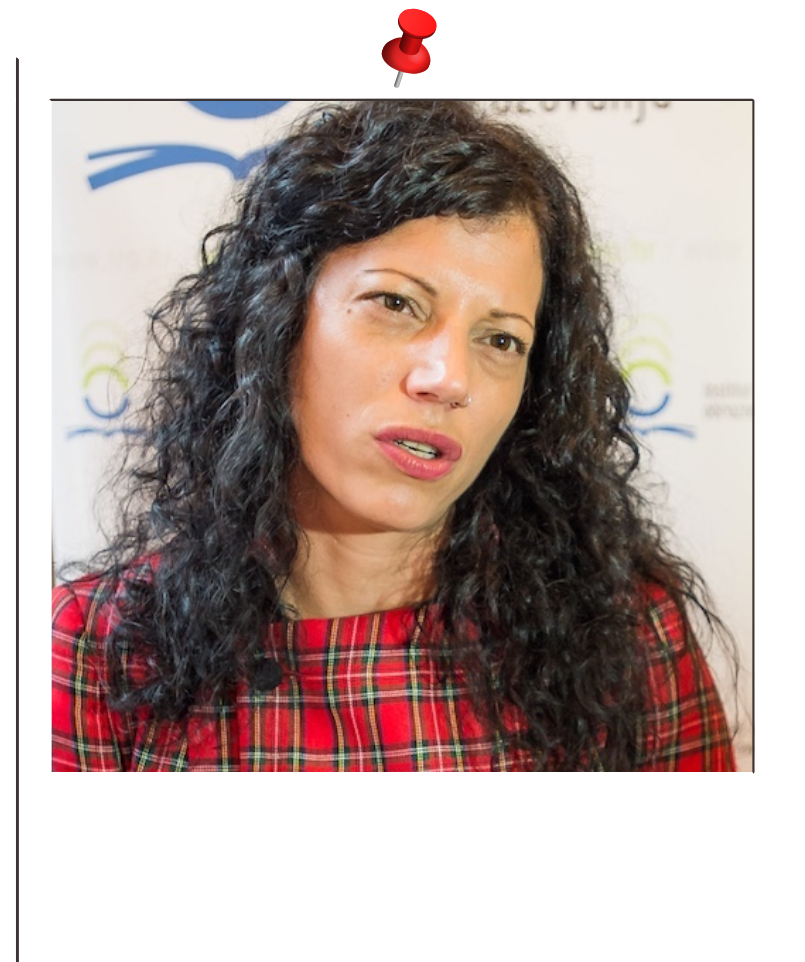Synergising theory with research
A word or two on community-based participatory action research (CBPAR) in youth work and how to boost its trustworthiness
by Bojana Culum
02/07/2021
 Introduction – Entering the research field as Alice to the Wonderland
Introduction – Entering the research field as Alice to the Wonderland
I assume that most of you know the Alice in Wonderland story. At one point in her illustrative wandering journeys, Alice arrives at the crossroads and sees a Cheshire cat sitting comfortably on a tree branch nearby. “Would you tell me, please, which way I ought to go from here?”, Alice asks her. “That depends a good deal on where you want to get to”, the Cat answers. “I don’t much care where”, says Alice in response. “Then it doesn’t matter which way you choose to go”, says the Cat.
I like this dialogue and think it perfectly illustrates various thoughts and insecurities that non‑researchers (including youth workers) might have while thinking about research, including if and how research can improve their engagement with young people. To put it in other words – if you don’t know where and how you want your research to direct your youth work, as well as changes in your community, it simply doesn’t matter if and what kind of research project you take on. And that should not be the case! There is a plethora of literature and studies done around the globe that can prove the importance of participatory research underpinning the quality of youth work. And one more important and, hopefully, empowering note – you don’t have to be an academic and (classical/traditional) researcher to embark on the participatory research journey. Academic colleagues might “hate” me for being this forward and for “selling” our research monopoly, but the idea of this article is not to diminish the importance of academic research, but to present a certain participatory research form for youth workers. I believe they should be knowledgeable about research and have the capacity to integrate it into their own working environment. This can improve their own, as well as their organisation’s work, thus contributing to the quality of youth work. What am I talking about? Well, this article is about community-based participatory (action) research and boosting its trustworthiness. So, let’s embark on the journey of discovering this concept together.
 What actually is community-based participatory action research?
What actually is community-based participatory action research?
Participatory research (PR) is usually used as an umbrella term for a school of approaches that share a core philosophy of participation, collaboration, inclusivity, power and knowledge sharing. If broadly defined, PR is collective, reflective and systematic inquiry, with the collaboration of those affected by the issue being studied, for purposes of education, improvement practices and/or taking action(s) to bring about social change. Participatory research recognises the value of engaging in the research process those who are intended to be the beneficiaries, users and stakeholders of the research, rather than including them only as subjects of the research. To put it simply – in participatory research you are doing research “with” people, not “on” people. And community-based participatory research is just one of many of such forms that is currently a more widely-recognised PR approach, with a growing number of applications within different fields, and around the globe.
Such participatory research forms have been increasingly used in various community-based programmes and there is a growing acknowledgement of their contribution to the quality of youth work as well. Unlike in “regular” academic research, these methodologies focus more on knowledge generated and constructed through lived experience, stories and narratives shared by the participants themselves. This is why the scientific ideal of objectivity, so important for academic research, is rejected in favour of a holistic approach that acknowledges and takes into account the diverse perspectives, values and interpretations of participants, thus allowing for their voices to be heard. However, methodological rigour need not be lost! Increasing the rigour and trustworthiness of various forms of participatory research related to youth work increases the likelihood that results are seen as credible and are used to continually improve the quality of youth work, as well as policies. I will come back to the point of trustworthiness a bit later in the article.
 Key principles and strengths of community-based participatory action research
Key principles and strengths of community-based participatory action research
The research cycle consists of several stages – starting from establishing the research question, to developing data collection tools, analysis of data and the dissemination of findings that have highly practical results. In an ideal setting, community members, professionals, practitioners, local policy makers, organisational and institutional representatives work in partnership with researchers in all research-cycle phases and accordingly design an intervention and/or policies to benefit the local community.
Following this philosophy, all those directly affected by or implicated in a given issue are not situated on the periphery of the knowledge production process. Instead, they partner with academics to produce knowledge with the potential to offer practical solutions. For that matter, CBPAR can be described as a bridge between the academic and non-academic world, while both (should) strive to bring about important research and evidence-based intervention that might in the long run affect certain social change.
The integration of researchers’ theoretical and methodological expertise with non-academic participants’ real-world knowledge and experiences into a mutually reinforcing partnership is actually one of the key strengths of CBPAR. In such research alliances, all partners contribute their expertise, and share decision making and ownership of the research process and results. In this way, CBPAR recognises and appreciates the unique strengths and resources each partner brings to the participatory research table. However, and due to many various factors, such reinforcing partnerships are not easy to form nor maintain. Not gonna lie to you – community-based participatory action research is time and energy consuming, but on the other hand, worth every single minute and energetic vibe invested.
Partners in CBPAR discuss their possibilities and capacities to participate – academic and non-academic partners negotiate and decide together how and in which research phase they’ll contribute. Acknowledging various (local) contexts, participation can be seen to represent a spectrum with different partners having more influence at different points in the research project. Coming to a reality check, neither you nor other community members will be available or interested to participate in every single research phase, so community members’ participation usually falls along a continuum – from having minimal input, over engaging in developing research tools and collecting data (interviews, focus groups or other research methods), to the highest form of participation when engaging in all aspects of the research, as we said before.
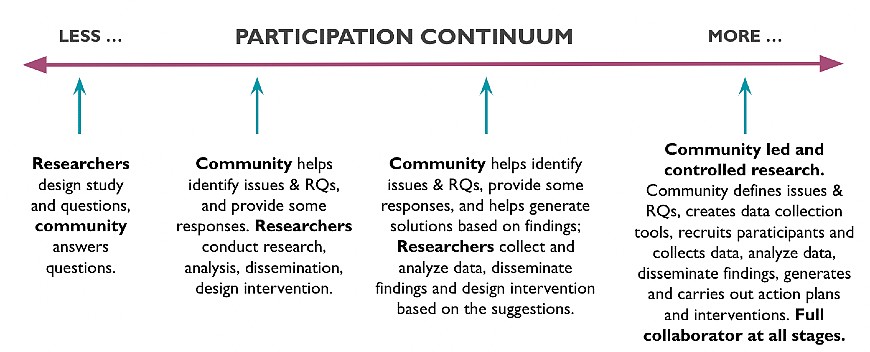
Adapted and revised from Burnice J. et al. (2011), A short guide to community based participatory action research
 The issue of CBPAR trustworthiness
The issue of CBPAR trustworthiness
In the quantitative research world we talk about validity and reliability of research, but when we talk about qualitative research, we talk about researchers and their efforts to secure the trustworthiness of the research. Trustworthiness accounts for researchers’ personal and professional efforts in securing methodological rigour so that research is seen as credible. In this way, you can continually improve the quality of youth work, as well as the intervention and policies that you might want to contribute to with your evidence-based research platform.
If you end up working, as previously mentioned, in an ideal setting of a reinforcing partnership with academics being part of it, they should know all the “tips & tricks” of the scientific merits of CBPAR. However, should you find yourselves interested in doing such research, but unable to find an academic partner, don’t hesitate to still be passionate about it! All you need is to learn a few more steps, put on a researcher “hat”, and here are some tips & tricks on how to boost your research trustworthiness.

Six strategies to boost your CBPAR trustworthiness:
1. Prolonged involvement
2. Triangulation
3. Peer briefing
4. Member checking
5. Discrepant case analysis
6. Audit trail.
PROLONGED INVOLVEMENT in the research field usually means for the researcher to get involved more (time-related) and deeper into the research process itself, and within the participants’ environment. Such an involvement helps reduce participants’ bias and reactivity as you build closer relationships of trust with them. On the other hand, there is a risk of increasing your own/researcher’s bias as you and your participants are likely to develop a set of common assumptions. Be aware of it.
TRIANGULATION stands for using multiple methods in data collection, multiple data sources, type of participants, multidisciplinary perceptive(s), or investigators within your research project. By combining theories, methods or observers in a research study can help ensure that fundamental biases arising from the use of a single method or a single observer are overcome. For example, with a group of young people you could collect data by engaging them in a focus group, while with some local policy makers you might opt for individual interviews.
Researcher bias (meaning your own) is one of the crucial bias threats for your CBPAR. It is important that you reflect on the influence of your previous knowledge and assumptions on your study.
PEER BRIEFING refers to having (de)briefing sessions with other researchers, colleagues, as well as superiors, in order to get input or feedback from others that might help you in realising the limitations of your research project. The idea is for all those engaged to be honest, critical and to offer some constructive feedback on how to move forward and improve the research project.
MEMBER CHECKING is all about seeking clarifications with those who participated in your research project. The idea is to keep in touch with your participants, to check out the “rightness” of your interpretations by actually asking them if your interpretations are in line with what they have said, and in a way, you can actually give them a reviewer role. You can do, what is called, a validation interview with some of them, and such interviews serve the purpose of making (additional) clarifications.
DISCREPANT CASE ANALYSIS is very important, I can’t stress that enough. You might end up doing interviews with a certain cohort of young people, and find one person having completely different ideas from the rest of the group. Please, don’t assume if just one or two participants out of who knows how many have different ideas, that they don’t count in your research. It is exactly the opposite. This kind of analysis is about digging deeper into those data, those cases that do not match the trends and patterns that emerged in the rest of your data. The thing is that some researchers tend to ignore such cases, as they fear it might put their study in danger or make it less consistent. However, the truth can’t be far away from it, as such cases actually tell you more about the rest of the data. They help you in highlighting not only how this particular case is different from the rest of the data, but even more, the similarities between the rest of the cases and your research findings.
AUDIT TRAIL is about keeping a record of all the activities within your research like audio recordings, methodological decisions, researcher diary, analysis book. It is important to have all of that available for demonstrations to interested and relevant actors, of course, rigorously following the ethical principles of such research. Audit trail brings transparency to your research, and the credibility of your findings are harder to argue.
 Final encouragement to jump into the CBPAR world
Final encouragement to jump into the CBPAR world
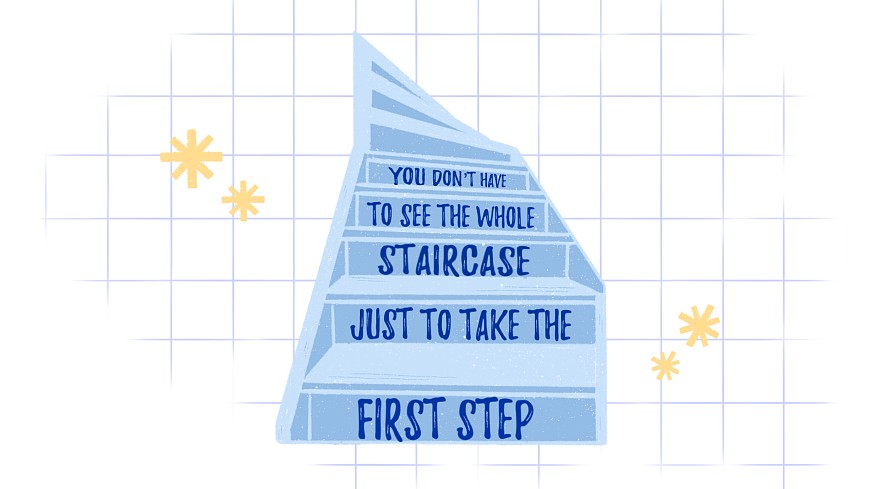
Therefore, go out there and do what researchers actually do – be curious, ask questions to which you want to find answers, ask different people affected by your research interest what they have to say about it, what are their needs, their problems and how they envision solutions. Listen to them, become a storyteller, and transform their experience and thoughts into a research narrative! Gather all interested parties, present the research findings, design and implement together an evidence-based activity/activities in your local community as an appropriate social intervention to address the issue(s) that have emerged from the research you’ve done.
Well, congratulations!
You have just become a community-based participatory action researcher :)

